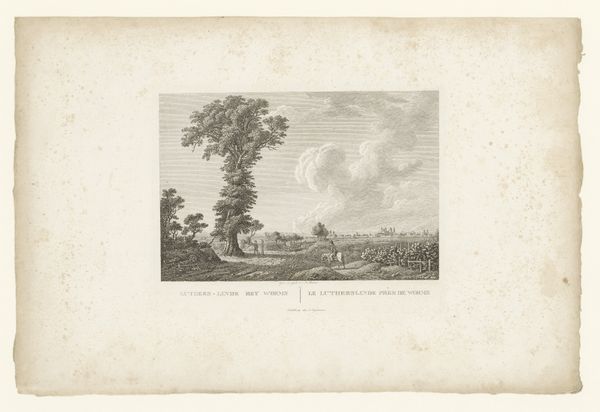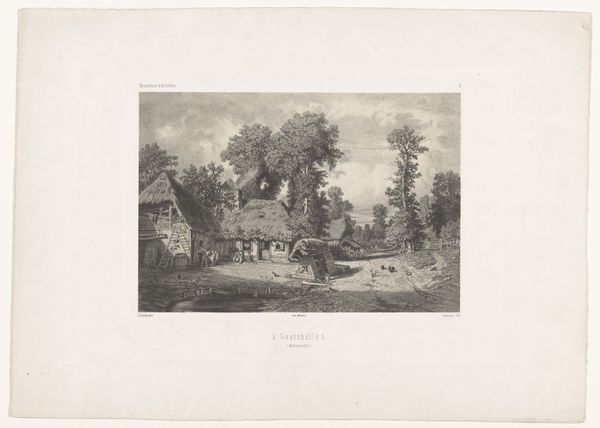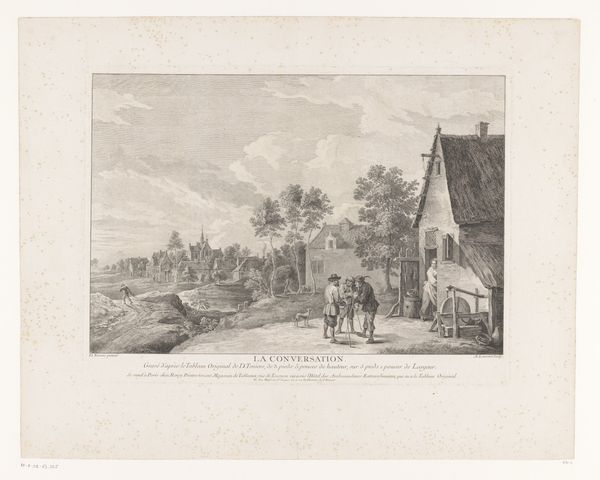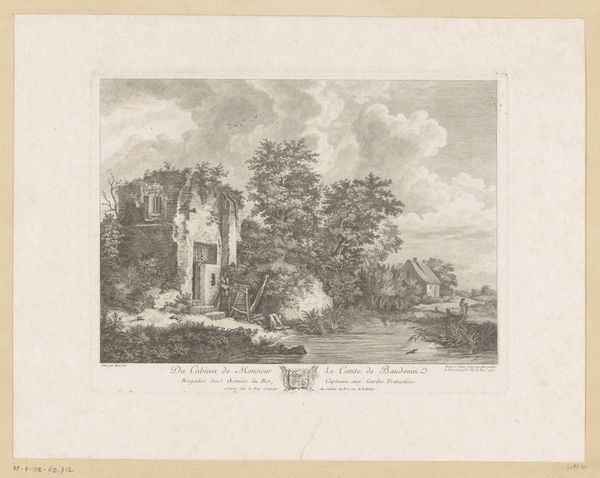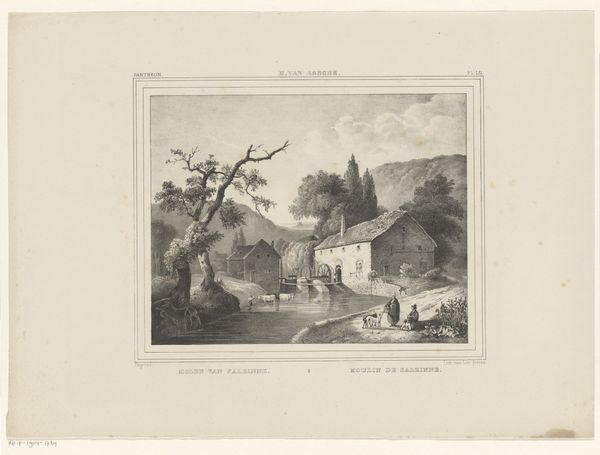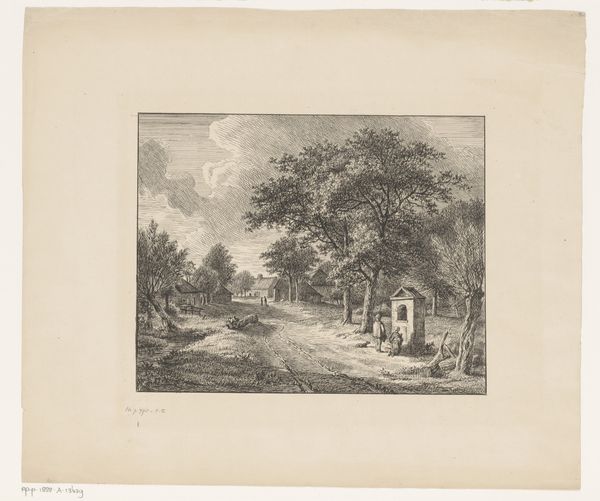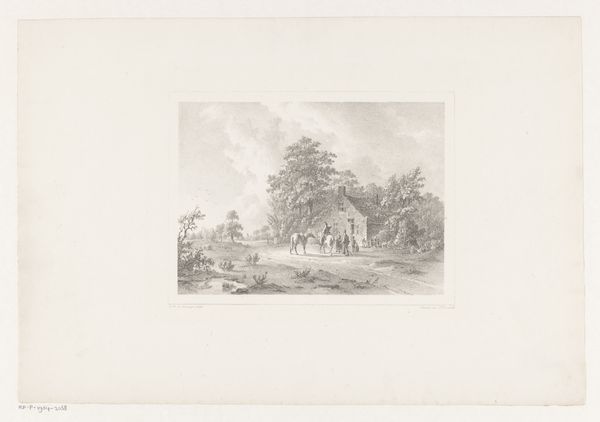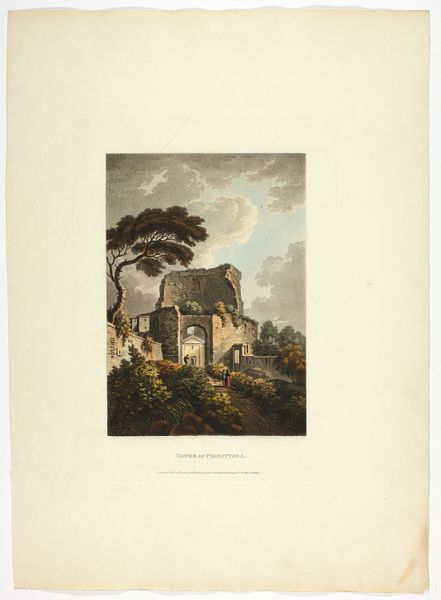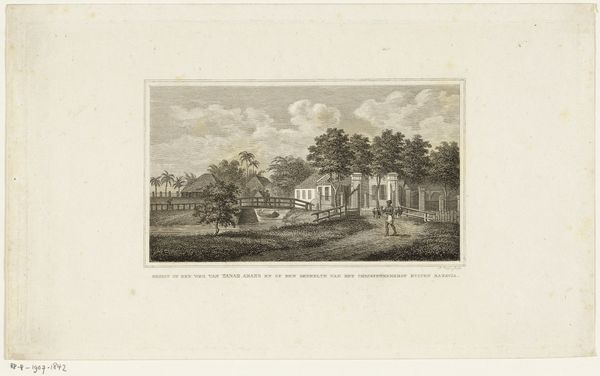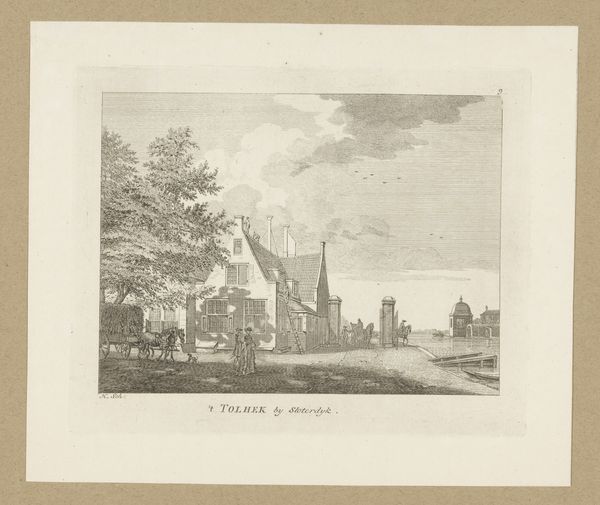
Temple of Venus and Cupid, plate twelve from the Ruins of Rome c. 1798
0:00
0:00
drawing, print, etching, paper, watercolor
#
drawing
#
water colours
# print
#
etching
#
landscape
#
paper
#
watercolor
#
romanticism
#
cityscape
#
history-painting
Dimensions: 330 × 448 mm (sheet)
Copyright: Public Domain
This is plate twelve from ‘Ruins of Rome,’ made by M. Dubourg in the early 19th century. The print presents the Temple of Venus and Cupid in a state of picturesque decay. Notice how Dubourg uses composition to create a dialogue between nature and architecture. The soft, muted tones and the crumbling forms of the temple evoke a sense of melancholy and transience. The temple's arches and the aqueduct are not just structural elements, but act as frames within frames, guiding the eye and fragmenting the view. This technique challenges our perception of space and time, inviting us to reflect on the ephemeral nature of human achievements. Dubourg uses the ruin as a signifier of cultural and historical change. The Temple of Venus and Cupid doesn't simply represent a place; it symbolizes a past that continues to speak through its ruins, a testament to the ongoing interplay between destruction and memory.
Comments
No comments
Be the first to comment and join the conversation on the ultimate creative platform.




